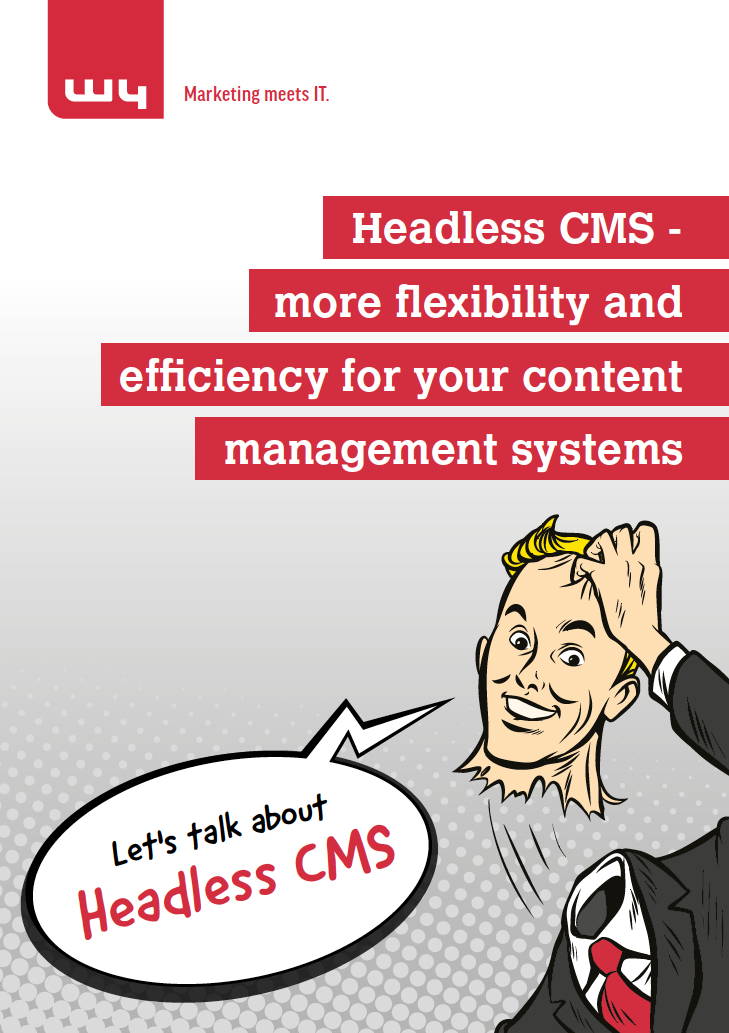
Download free whitepaper

Only a few years ago, content management systems had the task of ensuring the processing of content via a backend and of storing the content on a database. Today, many contents of a website no longer come directly from the Content Management System (CMS), but from various surrounding systems or systems of third-party providers. Extensions and complex plugins are required for the connection if websites and apps are to contain configurators, personalized content or offline functions. This leads to a lot of effort and restrictions for the IT, longer loading times and less functions for the customers.
Equipped with a completely new IT architecture, modern headless content management systems ensure flexibility and offer the possibility of combining the best services for the preparation and presentation of content on the market (Best of Breed).
The Headless CMS consists only of the storage of content and is connected with interfaces to the issuing media ("decoupled").
The W4 Whitepaper "Headless CMS - more flexibility and efficiency for your content management systems" gives an overview of the topic: